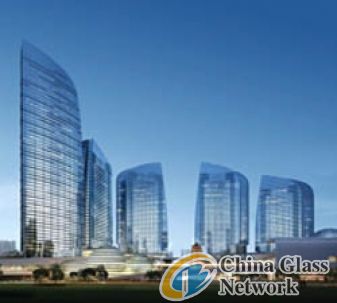Post Time:Feb 21,2013Classify:Industry NewsView:444
 Glass provides building designers with fascinating creative options, and the popularity of the material has increased dramatically over the last decade. This has led to growing demand for glass over other construction materials like cement, bricks and aluminium sheets. While the construction industry has developed at a rapid pace, so has the conscious demand for sustainable building materials.
Glass provides building designers with fascinating creative options, and the popularity of the material has increased dramatically over the last decade. This has led to growing demand for glass over other construction materials like cement, bricks and aluminium sheets. While the construction industry has developed at a rapid pace, so has the conscious demand for sustainable building materials.
The main uses of glass in buildings and houses are, of course, the most obvious and visible ones: facades and windows. Today, glass technology allows large commercial buildings to be energy efficient structures that make the most of natural daylight while protecting the environment by conserving energy. But are they safe? If a bomb were to go off nearby, would they withstand the blast? Remember the IRA bomb in 1993 in London? The explosion shook buildings and shattered hundreds of windows, sending glass showering down onto the streets below. Well, German researchers have looked into this issue, as part of a new building complex in San Francisco.
San Francisco, like most other cities worldwide, is a city that is constantly changing. Buildings are constantly being torn down and new ones put up. Dilapidated old factories and houses make way for new structures. For example, a huge building complex will soon go up on a site where until recently a train station stood: the Transbay Transit Center. This will be a five-storey structure with glass facades, over 20,000 square metres of floor area and a glass-covered park on the roof. A second phase will see the construction of an additional high-rise building. In order to find out if the glass structure will be capable of withstanding a bomb or nearby blast, a New York engineering office commissioned researchers at the Fraunhofer Institute for High-Speed Dynamics, Ernst-Mach Institute, EMI in Efringen-Kirchen in southwest Germany to investigate its safety.
The researchers studied the safety of glass structures by using the 'Blast-STAR' shock tube to test different glazing structures of glass facades for their resistance to the pressures produced by explosions at various distances, explains EMI researcher Oliver Millon.
The principle behind the technology is this: the shock tube consists of a driver (high-pressure) section and a driven (low-pressure) section, which are separated by a steel diaphragm. Researchers compress the air in the driver section to a pressure of up to 30 bar, i.e. to approximately 30 times atmospheric pressure on Earth at sea level. This permits the component to be subjected to a load pressure of 2.3 bar. When researchers set the appropriate amount of pressure, the steel diaphragm is ruptured: the air rushes out into and through the driven section and hits the glass section being tested, which is attached to the end of the shock tube, as a planar shock front.
First the glass is forcefully pushed backward, before the pressure relents and the glass is sucked forward. Depending on the pressure the researchers set in the driver section, they can simulate detonations of different amounts of explosive at different distances from the building - from 100 to 2,500 kilogrammes of TNT at distances from 35 to 50 metres from the building.
"Although the shock tube technology is well known in principle, there are only a handful of shock tubes in existence worldwide," says Millon. "The fact that extremely high stresses arise in the tubes makes them very complex to manufacture and operate." For example, the apparatus must be able to withstand abrupt changes in pressure across a large area; the glass sections being tested can be up to nine square metres in size. "In addition, we must ensure that we achieve a planar shock front at the glass section being tested, in other words that the shock wave reaches each part of the glass section at the same time." To this end, the researchers carried out computer simulations prior to construction of the shock tube and subsequently confirmed the results by taking measurements in the finished apparatus.
The preliminary investigations into selecting suitable glass structures for the Transbay Transit Centre have already been completed, and further investigations are planned for certified demonstration of the blast resistance of the pane types selected during the construction phase.
The project underlines the fact that Europe has consistently been at the forefront of green building technology, pushing forward sustainable construction techniques. European researchers will continue to focus on the safety of glass panels under extreme conditions, in order to ensure that sustainable construction is made as safe as possible.
Source: http://www.balkans.com/open-news.php?uniquenumber=Author: shangyi
PrevGerresheimer has an excellent pharmaceutical glass production infrastructure
Price of Laminated Glass Line on February 21, 2013 from China Glass NetworkNext